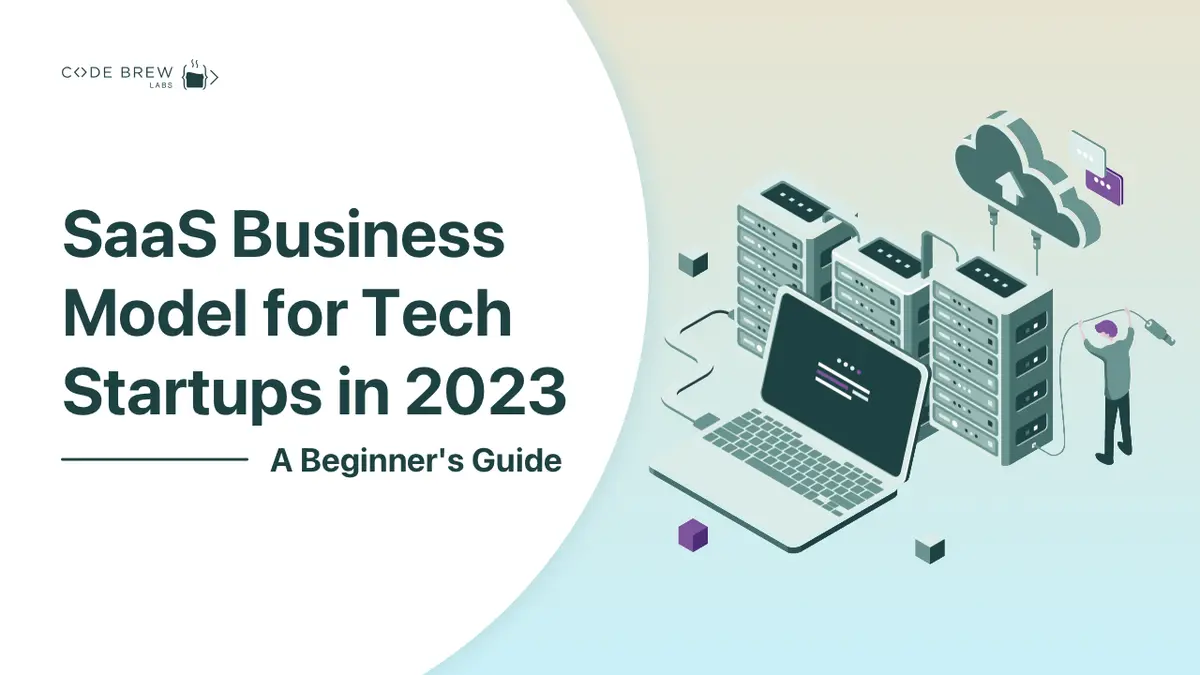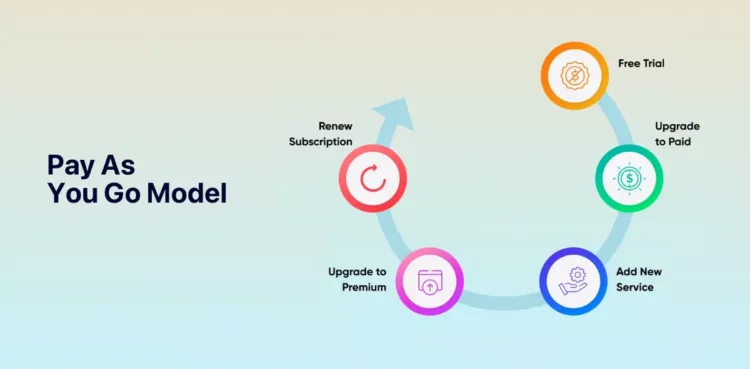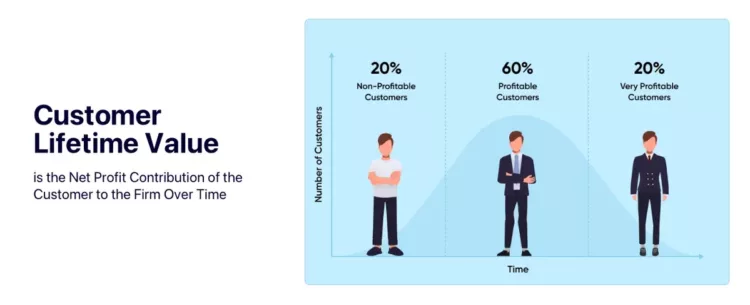
In the last few years, many new SaaS businesses have emerged and many have become unicorns. Revenue for collaboration and productivity tools like Zoom and Microsoft Teams significantly spiked and has been soaring ever since as now, more than ever, people continue working remotely.
Table of Contents
You too may be wanting to start your own SaaS business. And perhaps you’ve already done enough research, come up with an exciting SaaS business idea, or even have the entire business plan ready.
But here we ask, Do you have a SaaS business model laid out? After all, it is what will ensure your business continuity. It will ensure that your business keeps running, is profitable, and is resilient to all economic changes.

It lays out the specific processes, cost structures, and revenue streams of a SaaS business. This model hosts web-browser-accessible software in the cloud and gains revenue via subscription fees.
As a SaaS app development company is hosted online, it is more challenging to keep the wheels running. The team needs to have the highest level of expertise in areas like development and design. Besides, they should always be on top of industry trends.
But the good part is that once you’ve gained ground in this field, the resilience of the SaaS business model will help you stay clear of possible hurdles throughout the business lifecycle.
Who knows, maybe your SaaS Enterprise model may evolve into a niche of its own.
There are many cloud-based SaaS enterprise models:
A revenue model works extremely well in predicting the success of a SaaS business. The framework helps specify where a product is sold and what is its price.
So, the seller precisely knows the purchaser’s identity and their interests. This helps the seller curate targeted marketing strategies.
Within the SAAS revenue model, there are various types:
While making money directly as people view content, the affiliate revenue model helps business owners make money by directing sales to other sites. And that is made possible by using affiliate links.
At the same time, it’s vital to take care that the audience isn’t bombarded with too many ads! So, make sure they’re displayed only a select few.
To get earn money by advertising on a website or an app, the SaaS business owner first needs to attract a large audience.
This can be done by driving traffic to the website via ads. And this can be accomplished in either way:
Here, the focus is not on direct sales but on marketing a product or service for its clients.
The freemium SaaS business model allows clients to try out a product for free before they actually invest their money. A trial experience helps them get confident about a product.
Under this SaaS enterprise model, products are directly offered to end users. Here, no profits are split with any resellers.
But under this method, a considerable expense is involved in hiring a sales crew to increase revenue.
This involves charging customers a recurring fee for a service or product. It is the most common SaaS business model used by video streaming providers like Amazon Prime and Netflix.
The cost of all products and services is set under the SaaS pricing model. This information is vital when buying software.
Besides, it helps entrepreneurs get an edge over their competitors by researching the market.
Refer to these tried-and-tested pricing strategies for SaaS:
This means offering one, stock rate for a service periodically–monthly or yearly. Take note that when you are only starting, customization is not available.
But once there’s decent traffic, reiterations in the pricing structure can be done based on the features you want to add at a later stage.
Several pricing tiers are available based on the number and types of services included in various plans. When making plans, make sure you tailor them to suit the specific customer requirements.
One way to attract users like never before is by providing a free/low-cost plan. This usually works for start-ups.
This means that pricing is decided according to the number of users. Big corporations generally avoid incurring recurring expenses, something that happens when using SaaS applications.
This, this pricing structure is best suited for SMEs.
Under this plan, subscribers “rent” the service. You must have heard of many cloud services like Microsoft Azure, Amazon Web Services, and Google Cloud Platform providing this pricing structure to their customers. They use the service for as long as they need it and pay only the amount due for that period.

There are two SaaS distribution models:
No middleman is involved and the channel ends directly at the customer. Only an independent team and the relevant technical assets in the process are used.
Here, a third party makes direct contact with clients and closes the deal when a prospect wants to buy goods or services. This method includes in-app purchases, app store marketplaces, resellers, and consultancies.
Its overarching advantage is that new products that are built using the platform can be released into the market in no time. And its next best feature is the freedom to experiment as it is built on the cloud.
Besides these two points, here are the other reasons to start your own SaaS business:
SaaS has round-the-clock remote access. So, you can offer your services at any time and from anywhere.
With a SaaS product to your rescue, you can rule the market by giving cloud access. But make sure that you rightly target customers and build a SaaS product that solves their problems.
A SaaS enterprise model ensures that you get a steady flow of recurring revenue. Besides, you can access CRM dashboards to get an insight into a product’s market performance.
By analyzing the performance of one such competitor’s product or service, you can devise strategies to create the most valuable SaaS product.
Only a web connection is needed to use a SaaS product. As such, service providers can market with an MVP quickly, offer customers easy access, gather suggestions, and further improve the quality of services.
Monitoring key metrics like churn, revenue, leads, etc. is essential for business success. Here are the critical SaaS metrics you absolutely must consider:
Churn rate refers to the percentage of clients who don’t use your services over a specific period. It indicates the impact of business.
When calculating this metric, you must figure out what’s not ticking for the customers and what you can do to win them back.

The metric measures the amount of finances lost over a specific time. It especially becomes crucial when a few clients bring in more revenue than others.
CLV is the total amount of money a SaaS business earns over the course of the client’s relationship with that specific company. This is the formula to define the CLV:
The longer the clients subscribe to a service, the greater their Customer Lifetime Value.

This refers to the total amount spent on advertising and promotions to get new customers. Here’s how this SaaS metric can be computed:

The formula calculates the total number of months it takes to earn back the finances spent on customer acquisition. A business relationship is considered successful when a customer starts producing profit for the company.
The formula is:
The metric represents the customers’ level of involvement with a product. It takes three main factors into account: the frequency of user logins, the time spent using the product, and other determining factors.
These are:
Your main priority and objective should be creating a SaaS solution that proves a product-market fit. To start with, make sure that you know the difference between a Proof of Concept, a Minimum Viable Product, and a prototype.
Follow this sequence of steps to carry out the successful implementation of a SaaS business plan-
Based on this feedback, deep dive into building and launching a full-fledged product. Create a strategy around the pricing model that best suits your SaaS offering.
All in all, so far for businesses worldwide, the SaaS business model has successfully brought desired results, and that too, consistently, in the form of exponential revenue and economies of scale.
Besides, the SaaS enterprise model has also been offering great opportunities to software vendors for innovation and growth. So, when you start your own SaaS business, you take a step towards your prosperity while creating significant social impact.
The bottom line: the main thing that guarantees your success in the SaaS market is that you build a product that is different from your competitor’s, even if it may more or less deliver the same value.
And make sure that you hire an experienced software development company that has just the right expertise to build SaaS software. Until then, adios amigos!
